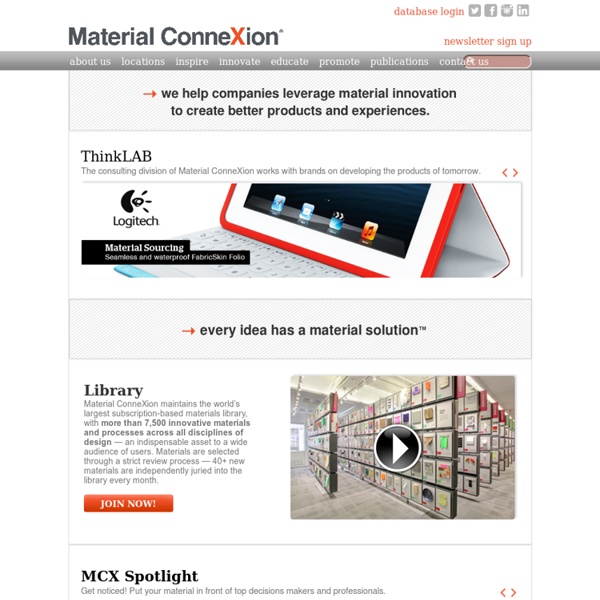



Lamina 1.0 digifab Designed by Paul Haeberli, Lamina 1.0 software facilitates the fabrication of large-scale free-form structures from planar materials like plastic, metal, or plywood. This fabrication technology can be applied to interior design, architecture, lighting, signage, and sculpture. Lamina 1.0 uses a computer process to build precise physical structures. This software accounts for the physical behavior of planar materials and uses the material thickness to inset the edges of cutting paths to make parts that fit together with precision. Contact: Lamina Design , Madison, WI, USA. Tags: digital , interfacial , process KORBAN/FLAUBERT
Prototyping | Memry Design assistance, not competition Memry has built its business around partnering with customers to refine their concepts for device component prototypes. The company’s mission is not to dictate designs to our customers, but instead to help shape them. Our engineers bring decades of experience in how nitinol reacts under different circumstances, and how well it works in different real-world applications. We encourage you to contact us early in your planning process so we can work together to find the best solution for your design challenge. Production quality at the prototype stage Many companies offer nitinol prototyping services, but none can match Memry’s 25-year melting and production history. We also plan for production-level volume when building our prototypes. Nitinol is also available in a new alloy, Redox™ .
The Smart Sponge A promising remedy for Gulf Coast cleanup by Alison Zingaro There is little doubt that the Deepwater Horizon spill is shaping up to be one of the worst oil disasters in US history. What remains a looming question is how best to handle containment and cleanup. Criticized by citizens, scientists and government officials for its overall unpreparedness and lack of organization, BP has been focusing the brunt of its efforts on capping the well and using chemical dispersants to break up the spill at the source of the leak. But what about the oil already washing up on shore, wreaking havoc on wildlife and communities along the Gulf Coast? The list of solutions, both proposed and in practice, is long and often debated: super-skimmers, man-made berms and sand jetties, controlled burning, oil-eating bacteria, and sorbent materials like hair, hay and fur. So for now, the Smart Sponge is waiting on the sidelines, ready to help as soon as the call comes. Photo (top) by NASA Goddard Photo and Video
EXPO™ Product Detail Expo™ Panel System Well balanced acoustical design contains an appropriate combination of absorption, reflection, and diffusion. In many applications, however, limited budget or available surface depth can preclude the use of sound diffusion products. If too much absorption is used, especially products that are efficient at absorbing sound in the high frequencies such as foam and fiber glass, it can lead to an acoustically "dead" environment without "air" or ambiance. To solve this problem, RPG® integrated its BAD™ technology into a decorative, natural wood panel solution that achieves balance between sound absorption and reflection. RPG Expo™ Panels consist of a binary amplitude panel backed with an acoustical fleece and porous absorbing core, typically a rigid fiberglass board with appropriate density for optimum performance. Problem Traditional absorptive wood panels offer reflection and reverberation control. Features